第17回惑星圏研究会が東北大学で開催されました(2016年2月22日~24日)
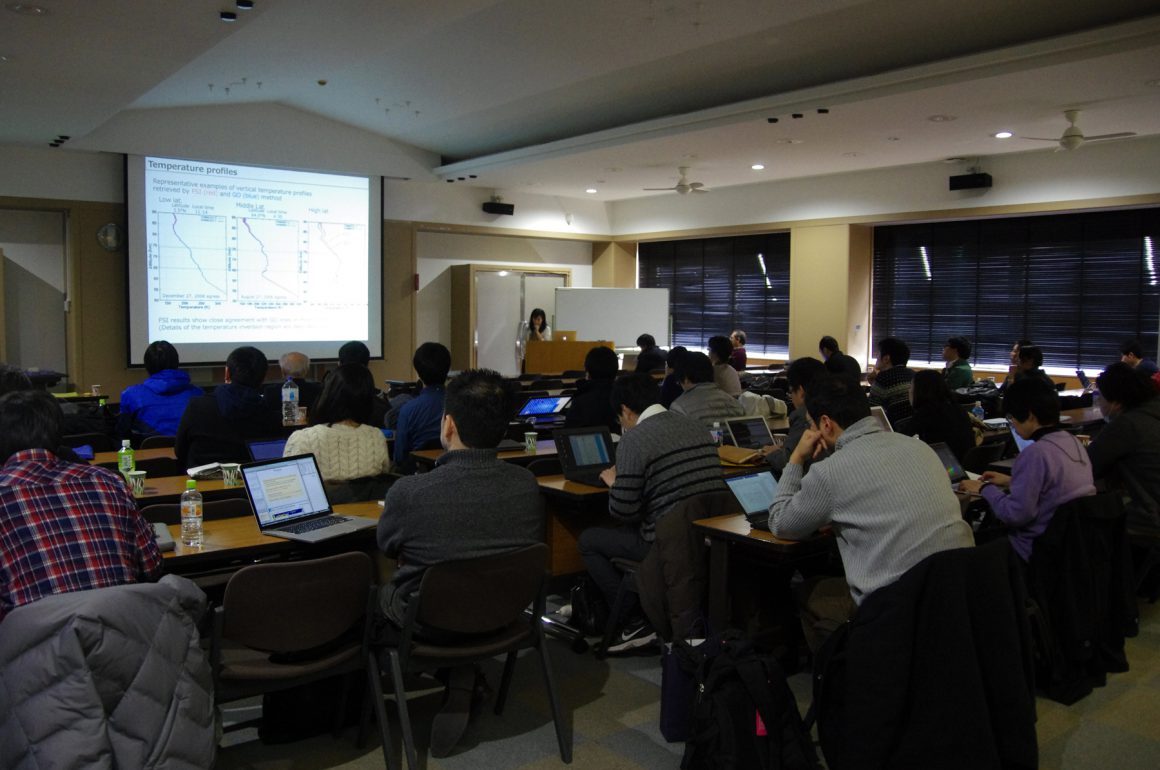
インタビュー Interview
Vol.8 イベントレポート
第17回惑星圏研究会が東北大学で開催されました(2016年2月22日~24日)
広く惑星のプラズマ・大気研究に関わる地球型・木星型惑星圏、観測・解析手法開発に関わる研究成果や現在進行中のプロジェクト、将来計画について、講演・議論の場を設けようと、「第17回惑星圏研究会」が2016年2月22日から24日までの3日間、東北大学大学院工学研究科の青葉記念会館にて開催されました。
特に今回の研究会は、これから宇宙航空研究開発機構 (JAXA)の金星探査機「あかつき」の金星周回軌道投入の再実施や、NASA(アメリカ航空宇宙局)の木星探査機「Juno(ジュノー)」の木星周回軌道投入の実施など、重要な惑星探査ミッションのイベントが続き、将来の惑星・衛星探査計画の検討も精力的に進められている時期での開催となったため、惑星探査に関するセッションが新たに設けられました。
研究会には全国の大学や研究機関から研究者や学生が参加し、頭脳循環を加速する若手研究者戦略的海外派遣プログラム「ハワイ惑星専用望遠鏡群を核とした惑星プラズマ・大気変動研究の国際連携強化」からも、東北大学の主担当研究者や派遣若手研究者たちが、口頭及びポスター発表を行いました。
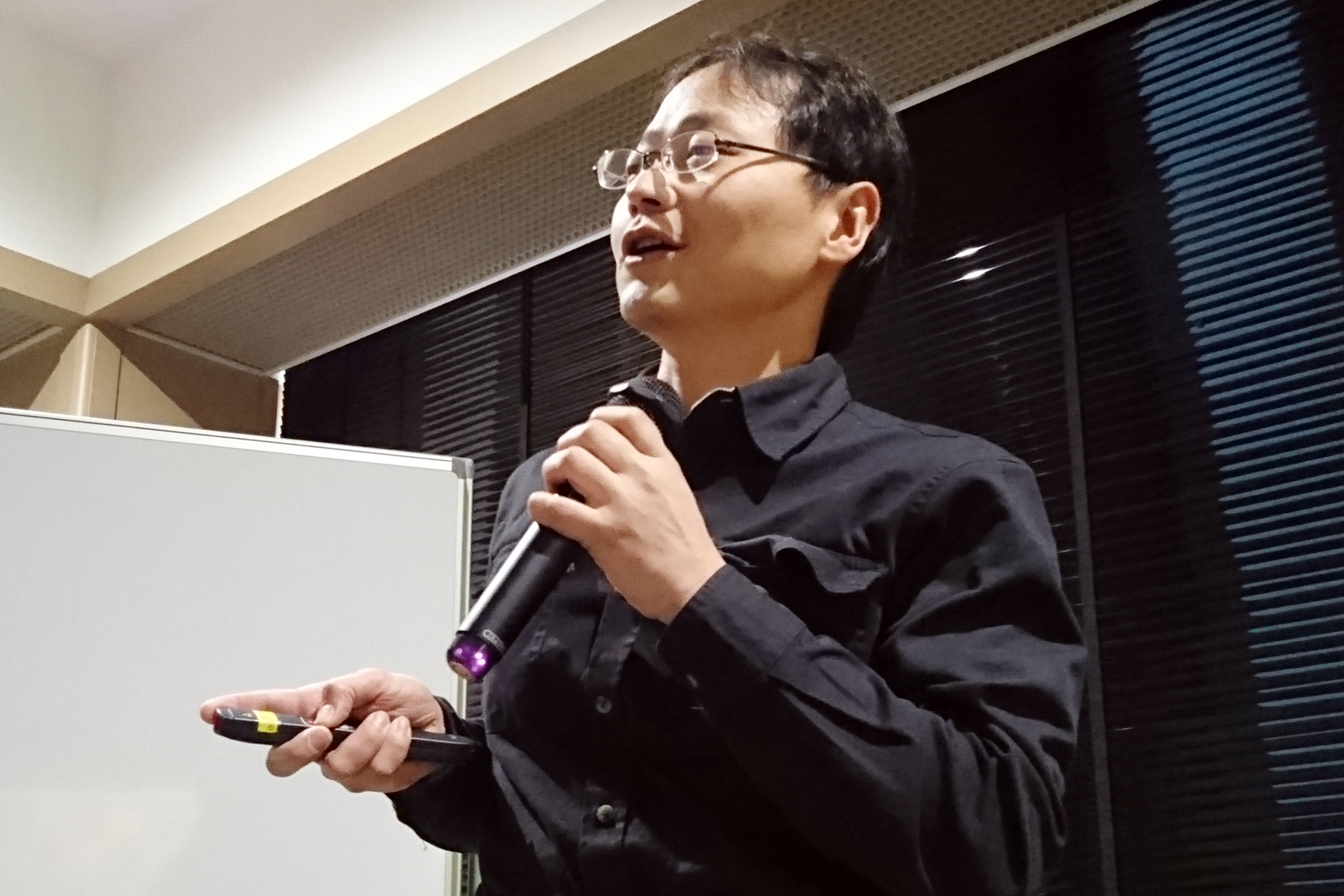 |
鍵谷 将人 (口頭発表) Oxygen ionic composition in the Io plasma torus |
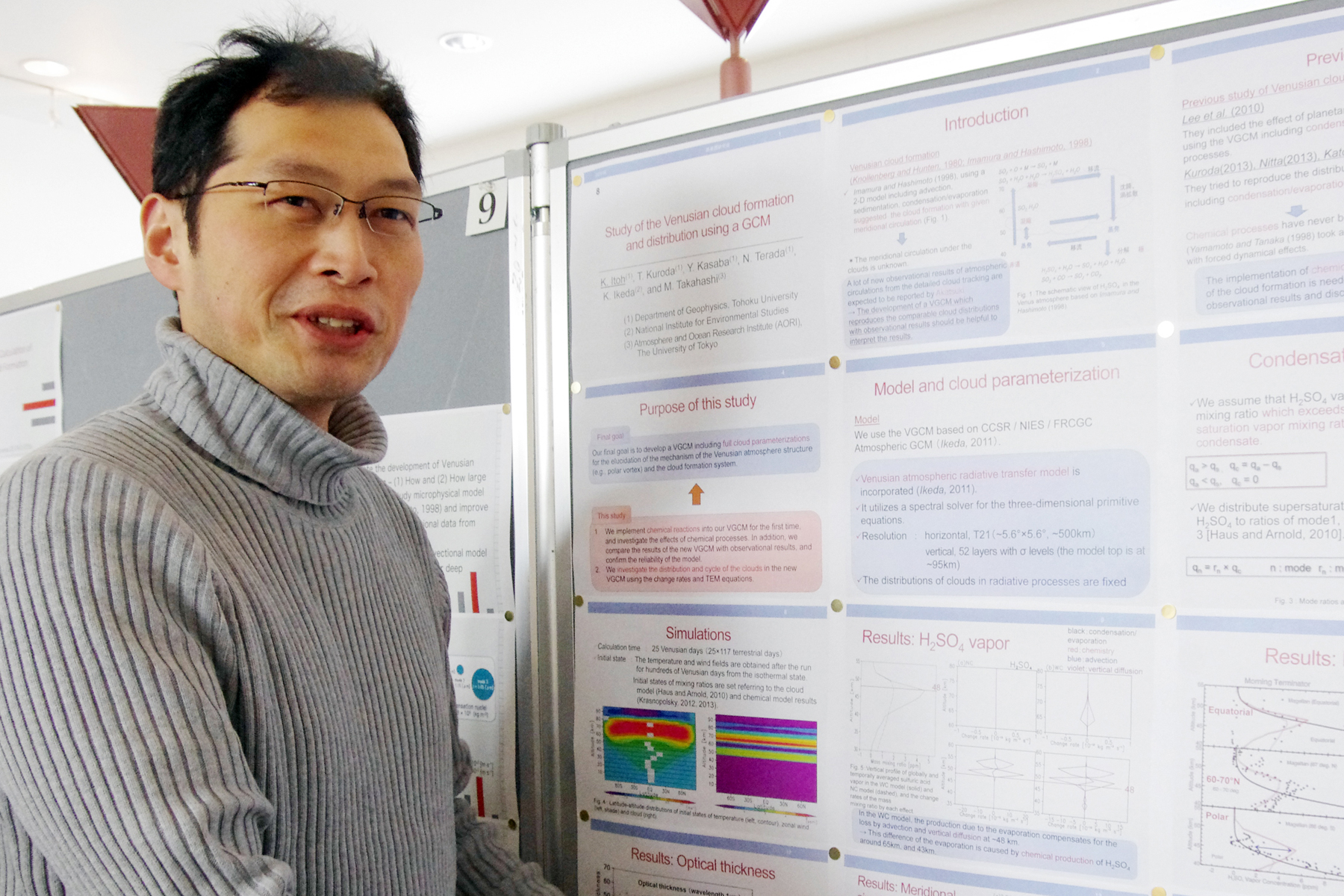 |
黒田 剛史 (口頭発表) Study of the gravity waves on Martian atmosphere using a high-resolution Mars General Circulation Model |
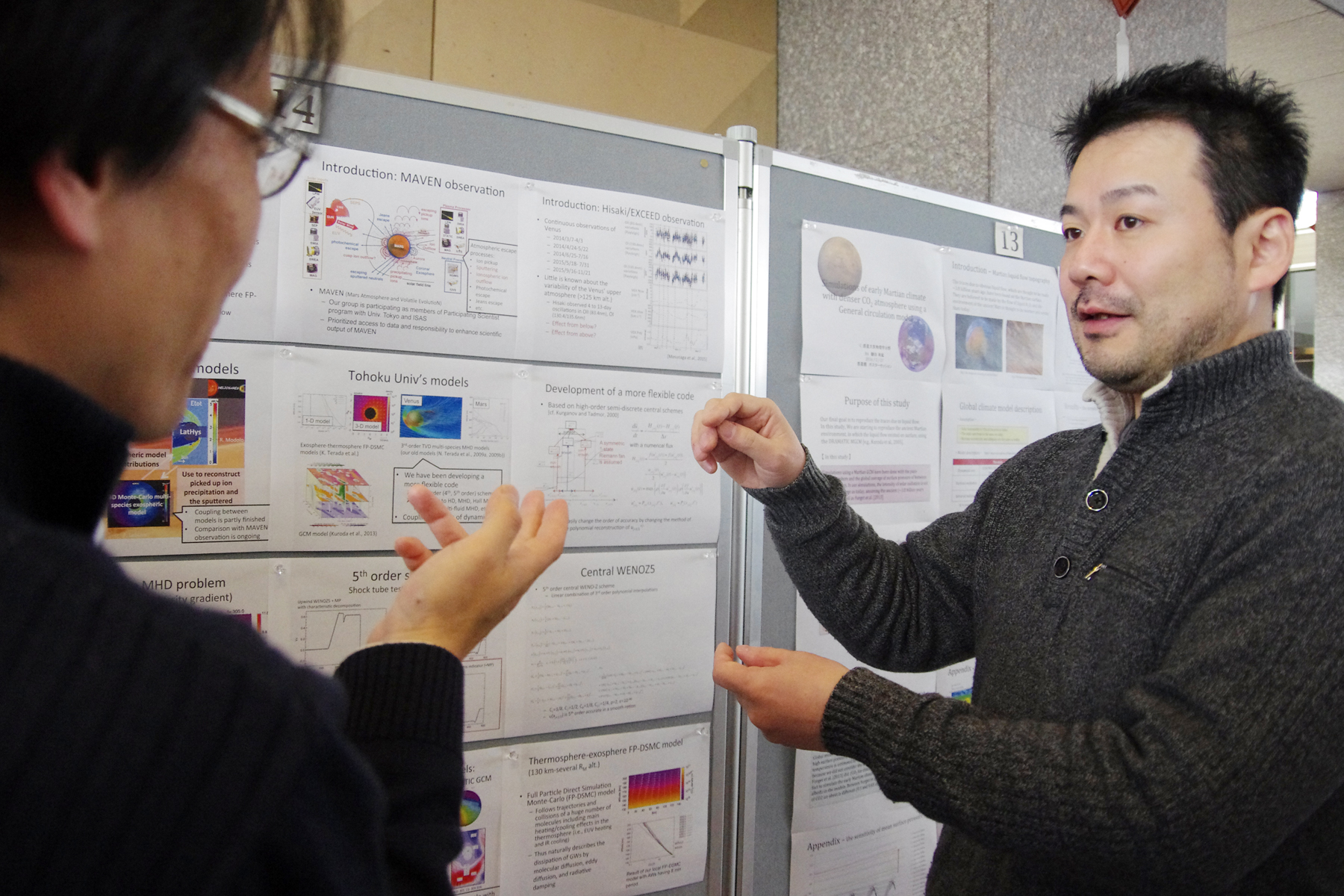 |
寺田 直樹 (ポスター発表) Development of a Planetary Magnetosphere-Ionosphere Model and its Coupling with Atmosphere Models |
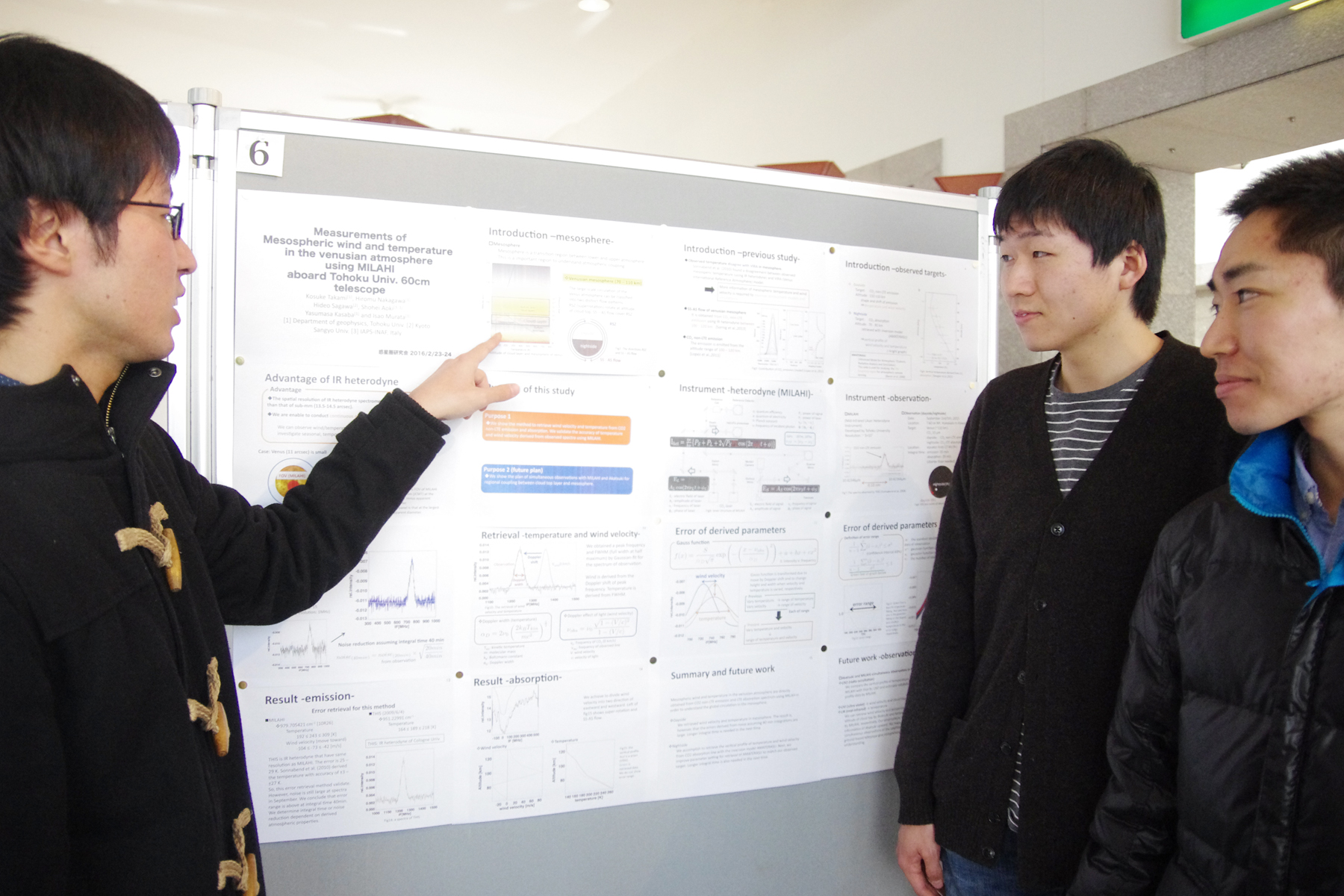 |
高見 康介、中川 広務 (ポスター発表) Measurements of mesospheric wind and temperature in the venusian atmosphere using MILAHI aboard Toho |
|
JSPS頭脳循環プログラム「ハワイ惑星専用望遠鏡を核とした惑星プラズマ・大気研究変動の国際連携強化」に基づく研究成果 Summary of JSPS program on international collaboration for planetary plasma and atmospheric dynamics research based on Hawaiian planetary telescopes |
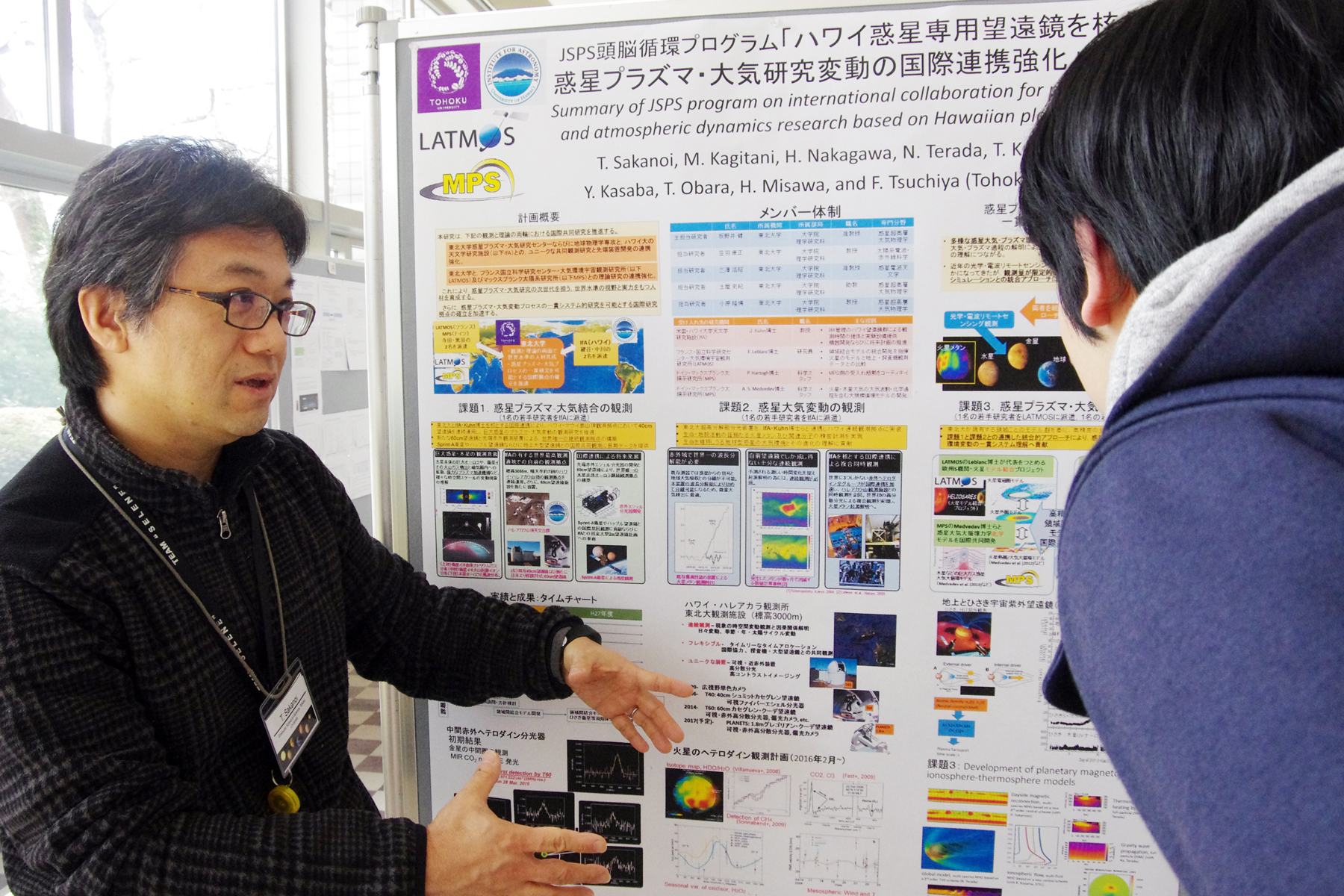 |
|
坂野井健, 鍵谷将人、中川広務、寺田直樹、黒田剛史、笠羽康正、小原隆博、三澤浩昭、土屋史紀(東北大学・大学院理学研究科) T. Sakanoi, M. Kagitani, H. Nakagawa, N. Terada, T. Kuroda, Y. Kasaba, T. Obara, H. Misawa, F. Tsuchiya (Graduate school of Science, Tohoku University) |
|
|
<Background> Understanding a variety of planetary atmosphere and plasma environments is important not only to clarify their own phenomena but also to examine universal planetary atmospheric environment in the past, present and the future. <Aim> In this study, we carry out the observation and modeling studies as international collaborations to promote four younger scientists responsible for the next generation planetary study with world class field-of-view and capability. <Promotion of young scientists> Associate professors Masato Kagitani and Hiromu Nakagawa stayed at Institute for Astronomy, Maui, Hawaii University for more than 1 year in total, and carried out the construction of 60-cm telescope facility at the Haleakala summit, installed the instruments on the telescope and obtained the spectroscopic data of Jupiter, Saturn, Venus and Mars. Assistant professor Terada Naoki stayed at Laboratoire Atmosph?res, Milieux, Observations Spatialesand (LAMOS) and an associate professor Takeshi Kuroda stayed at Max Plank Institute for Solar System Research (MPS) for the period more than 1 year in total, respectively, to develop a cross scale coupling model from the bottom to upper atmospheres in the planetary system. <Result and Summary> We manufactured our own 60cm telescope facility at Haleakala summit, one of the best place in the world for astronomy, and started unique monitoring observations of planetary atmospheres, such as Jupiter and its satellite Io, Saturn, Venus and Mars, using high-resolution spectrometers. In addition, we succeeded to develop high-resolution and accurate cross-scale coupling models for planetary atmospheres. We are now having roles on international big projects, such as PLANETS, TAO, TMT projects and the future spacecraft missions like Juno, JUICE, MAVEN etc. This work is supported by the JSPS program: Promotion of the strategic research program for overseas assignment of young scientists and international collaborations “Intensification of international collaborations for planetary plasma and atmospheric dynamics research based on the Hawaiian planetary telescopes.” |
|



